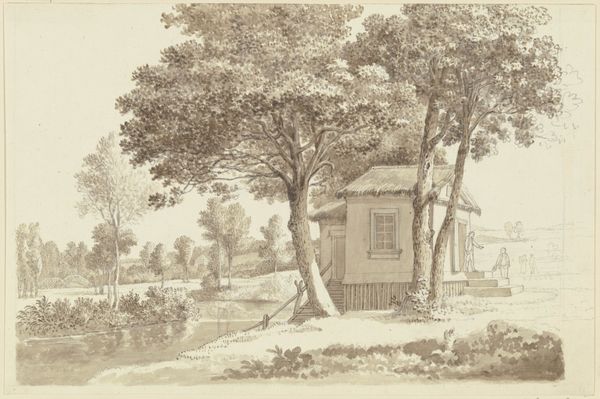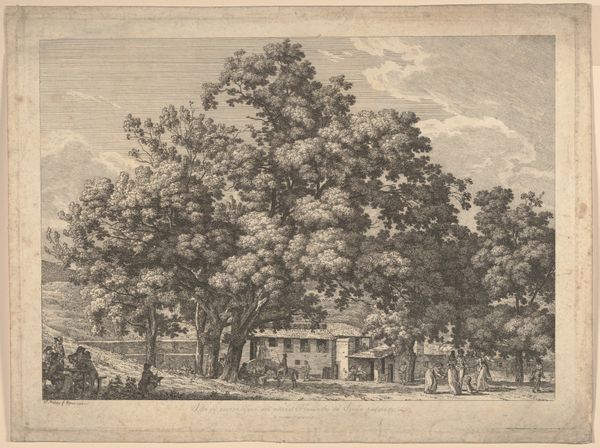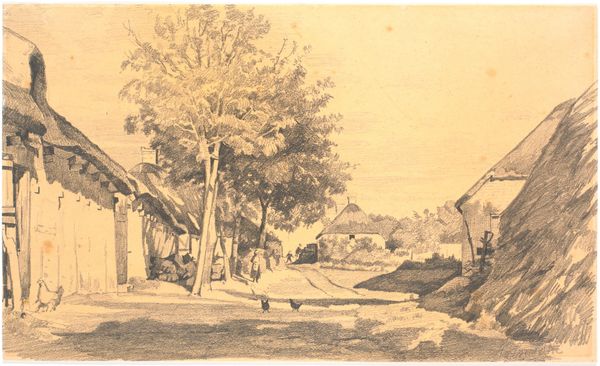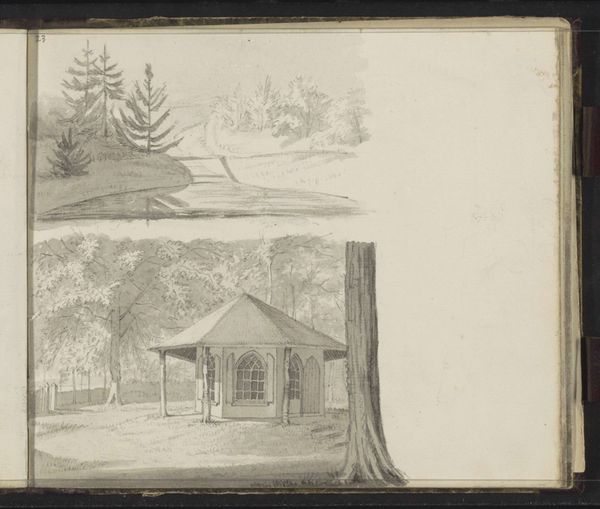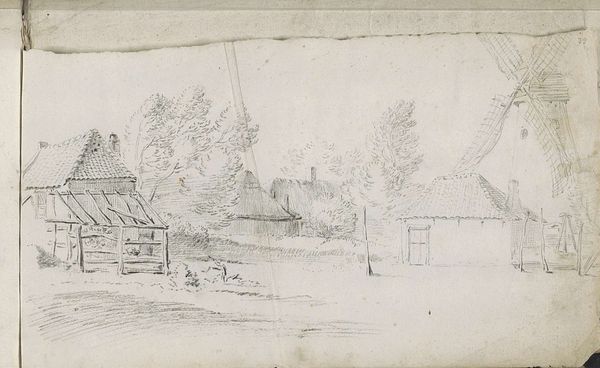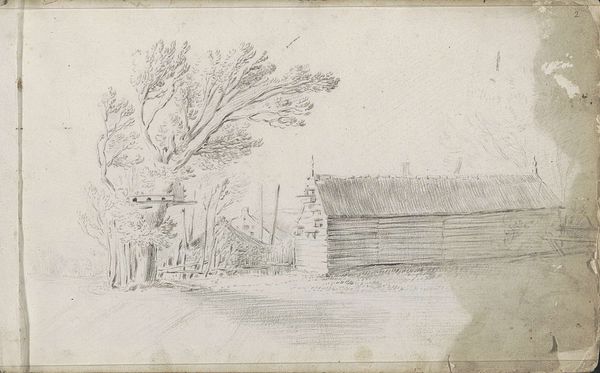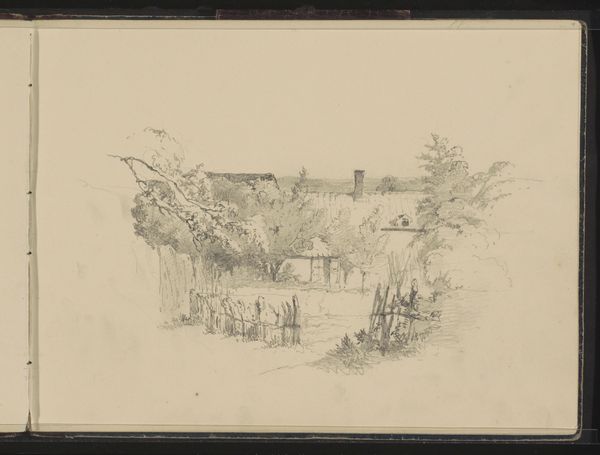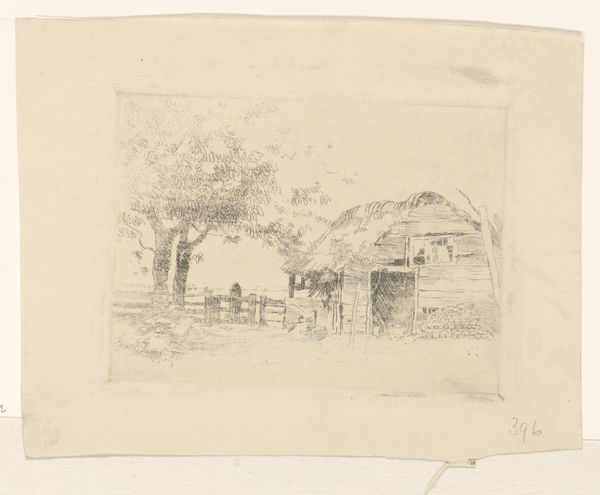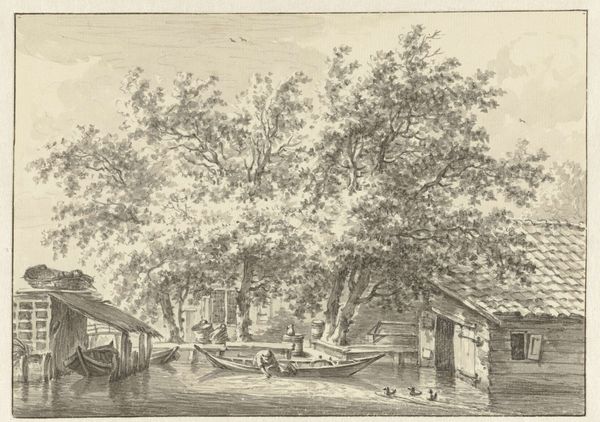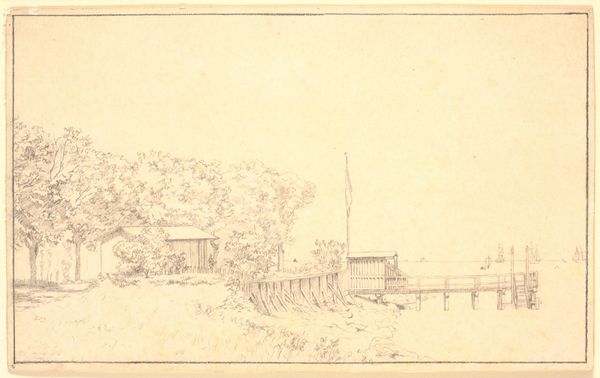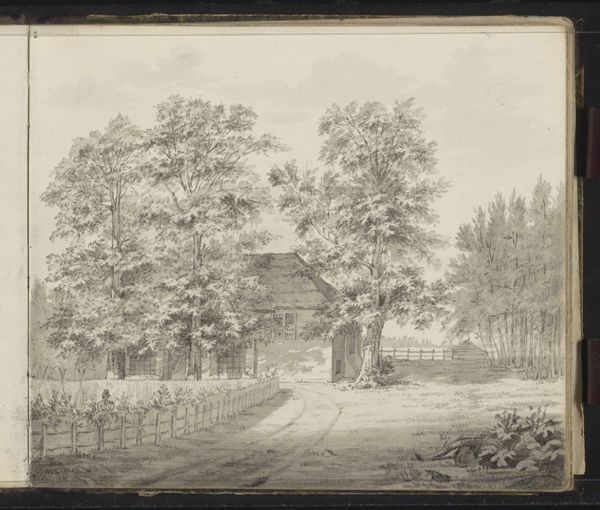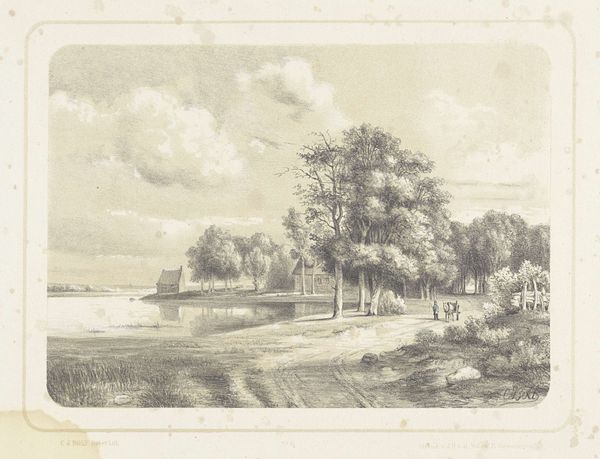
drawing, pencil
#
pencil drawn
#
drawing
#
pencil sketch
#
landscape
#
pencil
#
realism
Dimensions: 179 mm (height) x 261 mm (width) (bladmaal)
Editor: Here we have Thorald Brendstrup’s "Landscape with a Smithy," dating from around 1812 to 1883. It's a pencil drawing, quite delicate. The scene is tranquil, almost idyllic. What strikes you most about this piece? Curator: It's a deceptive tranquility. The smithy represents labor, the backbone of 19th-century society. But it also reflects the stark realities of class and the romanticized, often brutal, agrarian existence. Do you notice how the building is placed almost humbly within the landscape, suggesting the complicated relationship between human toil and the environment? Editor: I hadn't considered it that way, I was more focused on the harmony between them. But that makes sense. How does the drawing style contribute to this reading? Curator: Brendstrup’s choice of pencil, a medium easily accessible, suggests a deliberate act of documenting the everyday life of working people. It rejects the grandiosity often associated with art of this period, opting instead for a quiet realism that acknowledges the often-overlooked contributions of the laboring classes. And it also creates a sense of distance, doesn’t it? As though we are observing a way of life. Do you think there is something being left unsaid in its careful rendering? Editor: Maybe a certain romanticisation, despite everything? Because it feels peaceful, and kind of idealized, even if the reality was very harsh. Curator: Precisely. It's this tension—the romantic ideal versus the socio-economic reality—that makes the artwork so compelling and allows us to view it with new eyes today. It serves as a reminder of our own biases when viewing historical scenes. Editor: I never would have looked at it that deeply, but thinking about the smithy in terms of class and labour has completely shifted my perspective. Thank you. Curator: It is in questioning the surface and interrogating our assumptions that we begin to truly engage with art. It allows us to relate historical contexts to our contemporary moment, broadening the conversation beyond the purely aesthetic.
Comments
No comments
Be the first to comment and join the conversation on the ultimate creative platform.
